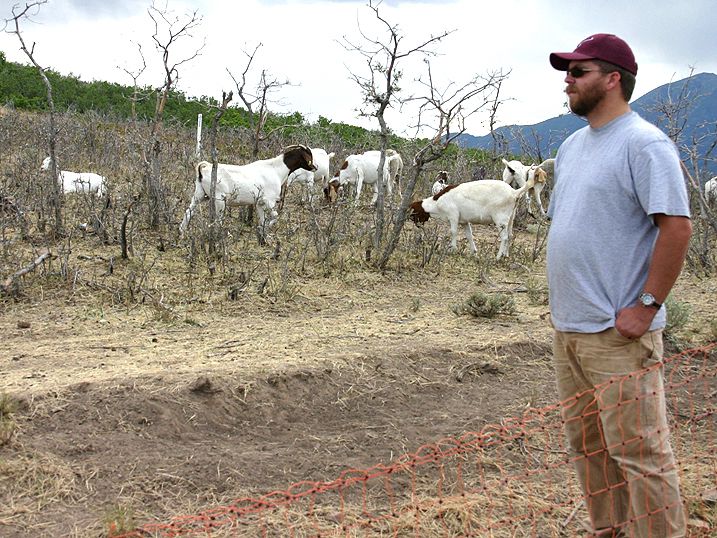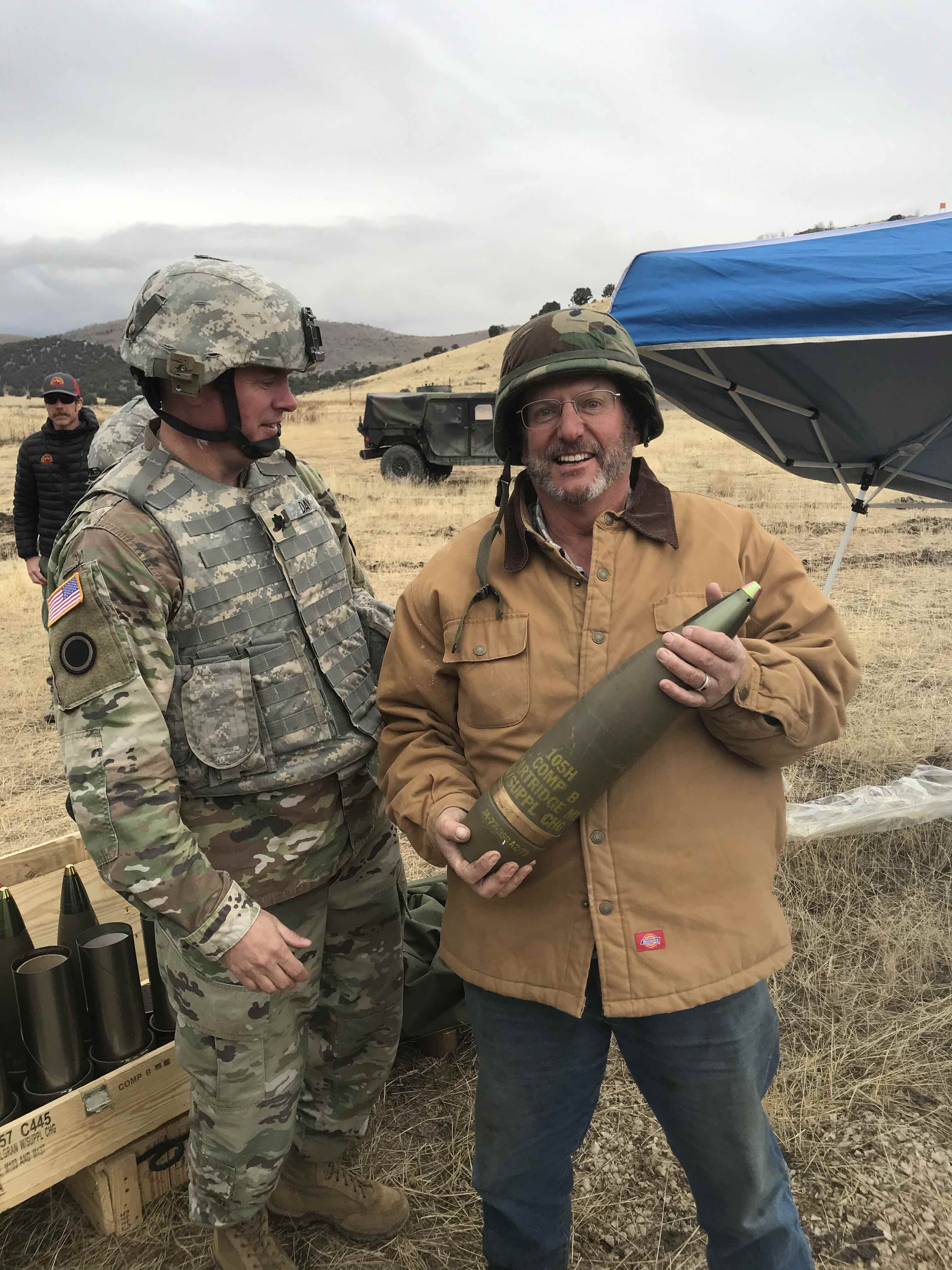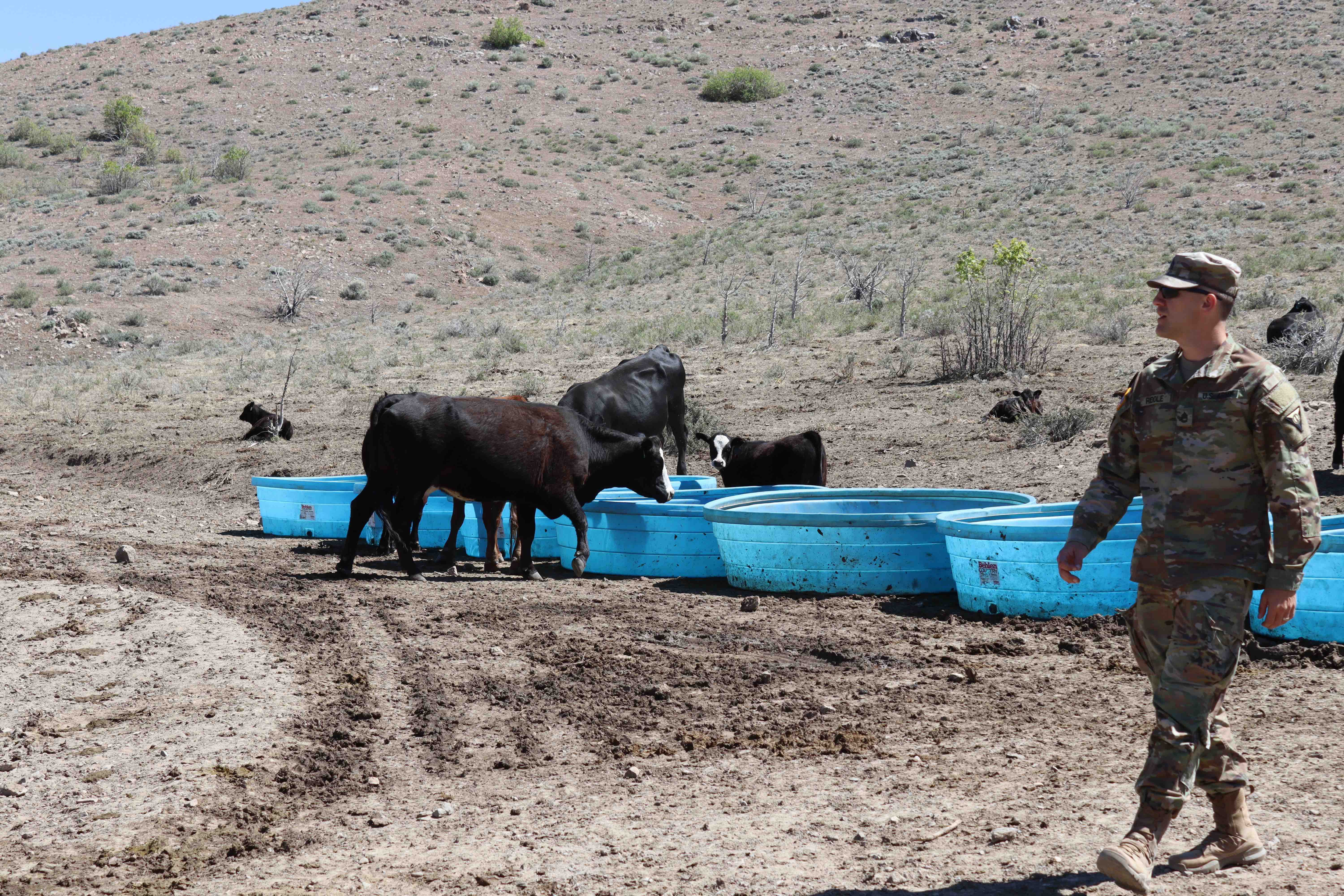Utah’s National Guard & Agriculture Working Hand-in-Hand to Provide Food & Freedom at Camp Williams
Author
Published
5/25/2023
CAMP WILLIAMS, Utah – There are some similarities between agriculture and our military, in that both represent about one percent of our population, both are highly specialized in their fields, and both have a role in protecting our national security. These two unique forces have come together in Utah in a mutually beneficial way.
Living in the west, and especially near our forest lands, means being aware of the dangers of wildfire. This has increased in recent years with the effects of drought and as the population has grown into mountainous areas. Wildfire names such as Milford Flat, Pole Creek, Seeley, and Clay Springs have become well-known as they have threatened communities. But even in the middle of the developing areas, fires have posed risks. Such is the case because of roughly 50 square miles of rough terrain hidden behind the growing tech sector of Lehi, which comprises the Army Garrison Camp Williams. More commonly referred to simply as Camp Williams, this is a Utah National Guard training site located south of Bluffdale and West of Lehi, approximately 25 miles south of Salt Lake City.
Beyond the growing residential and business area, this rugged area has served as a military training facility since 1914, with development now surrounding the base. To reduce the dangers to the growing communities, leadership on the base began working with range experts from Utah State University back in 1999 to develop grazing plans that could be beneficial for both ranchers, as well as the military. Within just a few years, goats and sheep had cleared more than 10 miles of firebreaks.

Photo of Jason Garn with goats grazing in 2009. U.S. Army photo by Lt. Col. Hank McIntire
Those efforts were rewarded soon after when a major wildfire broke out in 2006.
“The fire was driven by winds approaching 20 mph into twin, bulldozed firebreaks,” said Sean Hammond, manager of the Utah Guard's Integrated Training Area in an article for the Army website in 2006. “The twin firebreaks held for between 10 and 15 minutes before the fire jumped the lines and raced uphill toward the camp's northern boundary.
“At that point, pushed by nearly 40 mph winds, the blaze neared the top of the ridge, when it hit the area cleared by the goats.
“The fire line plowed into the goat firebreak and stopped,” Hammond said. “Personnel on the ridge at the time ... remarked that had it not been for the goats, the fire would not have stopped at the ridge line.
If the fire had not stopped there, Hammond explained, it most likely would have continued to nearby housing developments.”

The fire came within a few hundred yards of where, in 2007, goats uncovered an unexploded ordnance that was estimated to have been there since the 1980s but had become overgrown with brush.
Over the years, large fires broke out approximately every 7-10 years around the base, but have been lessened due to the early experimenting with goats and sheep grazing. Unfortunately, shrapnel from a training exercise ignited the Machine Gun Fire in 2010, which escaped base boundaries and resulted in 4,300 charred acres and the loss of three homes. The Oak Springs fire in 2012 burned an additional 200 acres.
Following the massive Machine Gun Fire in 2010, base officials began working with leaders from the Bureau of Land Management and again with Utah State University to come up with a fuel mitigation strategy that called for increased grazing. Early on, the base was working with approximately 1,200 goats and sheep, but officials found that the animals were great at eating the sagebrush and oak brush that surround the base, but there was still some vegetation they weren’t eating. They decided to increase their use of grazing and struck up a relationship with ranchers from the Tickville Grazing Association to bring cattle to the base.
Base leadership hoped to improve the fire-reducing efforts of the goats by increasing the land that could be grazed by working with cattle. They have brought more than 1,000 pairs of cattle (a cow and her calf) to graze on more than 4,200 acres of land. The cattle typically graze from around March until July or August, depending on precipitation and land conditions.
Jim Smith is a rancher in Utah County who has worked with the base for several years to have his cattle graze on the base. Smith said base officials have been fantastic to work with and been great communicators because they know if the ranchers are successful, the range will be resilient.

Rancher Jim Smith with military personnel at Camp Williams.
“We’re in constant communication with leaders when it comes to moving our cattle, bringing in water, etc. They have been great to work with,” Smith said. “There are challenges from grazing here because we have to haul in water constantly (more than 15,000 gallons a day) and train our cattle on the more than 38 miles of poly wire fencing, but we’re able to graze our cattle economically.”
Smith said in addition to providing land to graze on, the Army pays the grazing association because of the many demands and expectations they place on them – such as moving cattle to different locations based on Army training schedules. The extreme topography of the base, unimproved roads, and wear on equipment have been additional challenges to the ranchers, but the base and surrounding community have been appreciative because it provides further protection for their homes.

“We either manage the fires, or they manage us,” said Major Jared Sorenson of the Utah Army National Guard. “This is one tool in the toolbox.”
Sorenson acknowledged that cattle grazing isn’t the perfect tool for all locations on the base, but that the Homeowner Associations (HOAs) of nearby neighborhoods have appreciated having the cattle, as additional protection for their homes.
Rancher Jim Smith appreciates being able to help the community and base, while also adding value to his cattle herd. Smith is proud of the track record of fires staying contained in the years since his cattle have been grazing alongside the troops. It is hoped that this partnership with agriculture and its surrounding community will continue to serve as a model of what can be done by working together. This will be needed here and throughout Utah, as the state population continues to grow into rural areas.
Want more news on this topic? Farm Bureau members may subscribe for a free email news service, featuring the farm and rural topics that interest them most!
